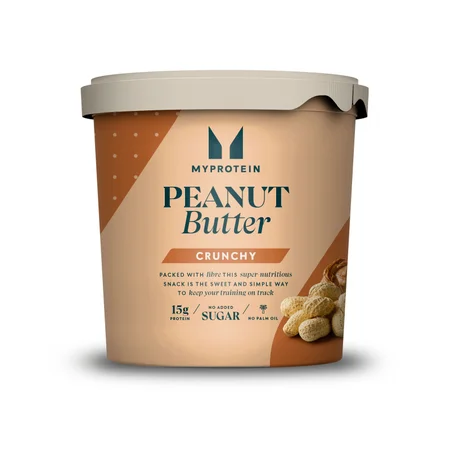Benefits Of Compound Movement Exercises | Build Mass, Burn Fat

The resistance exercises you do in the gym can be categorised into two different types: isolation and compound. Compound exercises are movements that involve multiple joints, and thus use a larger number of muscle groups (and subsequently a larger amount of muscle mass is used). Isolation exercises only use one joint, and subsequently tend to focus on one muscle group, thus using less muscle mass. For example, the barbell back squat would constitute a compound lift, as it uses the hip, knee and ankle joints, thus utilising the glutes, quadriceps and calves (along with the upper body to support the load used). A leg extension would be an isolation exercise, as only the knee joint is used, and thus the quadriceps are the prime movers.

Benefits of Compound Exercises
Burn more calories
Compound exercises use larger amounts of muscle mass, and in order for these big muscle groups to keep working, they require more energy. Compare a deadlift with a hamstring curl, both exercises are targeting your hamstrings, however a deadlift also uses the glutes, back, shoulders, forearms and your core. During your session all of these muscles require increased blood flow to deliver glucose, oxygen and other nutrients to the muscles, so your heart rate will increase to match these demands. During recovery, muscles that have undergone exercise induced muscle damage will demand more energy to support the healing process, which your body can get from food and fat stores.
Improve Muscular Balance
Isolation exercises are ideal for addressing weaknesses, although they can result in some body parts becoming overdeveloped in relation to their antagonistic pairs. This can result in strength imbalances and can potentially produce injuries if left unmanaged. Compound exercises are typically bilateral, and thus will not result in these same imbalances, although isolation exercises can still be used for supplementary stimulation to ensure any other weaknesses are addressed.
Improve Core Strength
There is much dispute around the true definition of the core, but in this section, we are referring to the muscles that directly connect to the spine to support your posture, and also those that contribute to core rigidity when bracing. During compound lifts, you are likely to be stronger, as multiple muscle groups are working together. In order to protect the spine from injury, proper core bracing must be used to maintain a neutral spine position (i.e. during the barbell back squat). Ultimately, this leads to significant stimulation of the core muscles, thus helping to improve strength that can contribute to improved athletic performance.
Stimulate Increased Hormone Release
As these movements recruit more muscle fibres than isolation exercises, your body consequently releases greater levels of hormones, particularly growth hormones such as testosterone. These hormones are responsible for repairing your body to help you improve the way you can deal with similar stimuli next time they occur. In this case, these hormones can help you to increase muscle mass and get stronger than if you were training with isolation exercises alone. This is one of the reasons that leg training (e.g. squats, deadlifts etc.) is so important, as they use large muscle groups.
When to Use Compound Movements

Generally, when programming compound exercises into your programme, they should be performed after the warm-up, but prior to the isolation exercises and other accessory lifts. For instance, if you want to increase the load lifted in the barbell back squat, then you need to be putting the most energy from your session into this exercise. If you were to perform this exercise at the end of the session, after 3 or 4 other exercises, then you will be too fatigued to be able to perform this lift effectively, and you will also increase the risk of getting injured as you will be too fatigued to maintain the optimal positions throughout the lift. You can, however, use an isolation exercise prior to a compound lift, known as the pre-exhaust method. This method involves performing an isolation exercise for the same muscle group as the compound that follows, in an effort to increase muscle activation during the ‘main lift’, also ensuring that all muscle fibres have been maximally fatigued (this is especially important when hypertrophy is the goal). Even in this case, it is still advisable to perform the rest of your accessory lifts afterwards, so that you can maximise the training adaptations made from the compound lifts.
Examples of Compound Movements
There are plenty of compound movements, however here just 10 to focus on – including the well-known Squat, Deadlift & Bench Press.
| Compound Exercise | Muscles Used |
| Deadlifts | Hamstrings, Quads, Glutes, Calves, Back, Traps, Core |
| Squat | Quads, Glutes, Hamstrings, Calves, Core |
| Lunges | Quads, Glutes, Hamstrings, Calves, Core |
| Bench Press | Pectorals, Triceps, Anterior Deltoid, Core |
| Chest Dips | Pectorals, Triceps, Core |
| Overhead Press | Deltoids, Traps, Triceps, Core |
| Upright Row | Deltoids, Traps, Biceps |
| Lat Pull Down | Lats, Biceps, Rhomboids, Posterior Delts |
| Bent over Row | Rhomboids, Biceps, Lats, Posterior Delts |
| Pull Ups/Chin Ups | Lats, Biceps, Rhomboids |
These lifts should be staple exercises, regardless of your lifting goals. Prioritising technique over load will help to minimise the risk of injury, while maximising the effectiveness of the exercises in terms of training adaptations made.
Take home message
Compound exercises use a larger amount of muscle groups, and thus a larger amount of muscle mass. Ultimately, this contributes to an increased demand for energy from calories during exercise and recovery, thus making compound lifts ideal during periods of weight loss. Finally, due to the capacity to be able to load compound lifts heavily, they are ideal for training adaptations such as strength, and thus should form a large part of your training programme.
READ MORE HERE:







